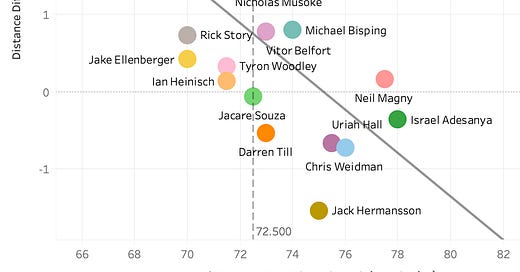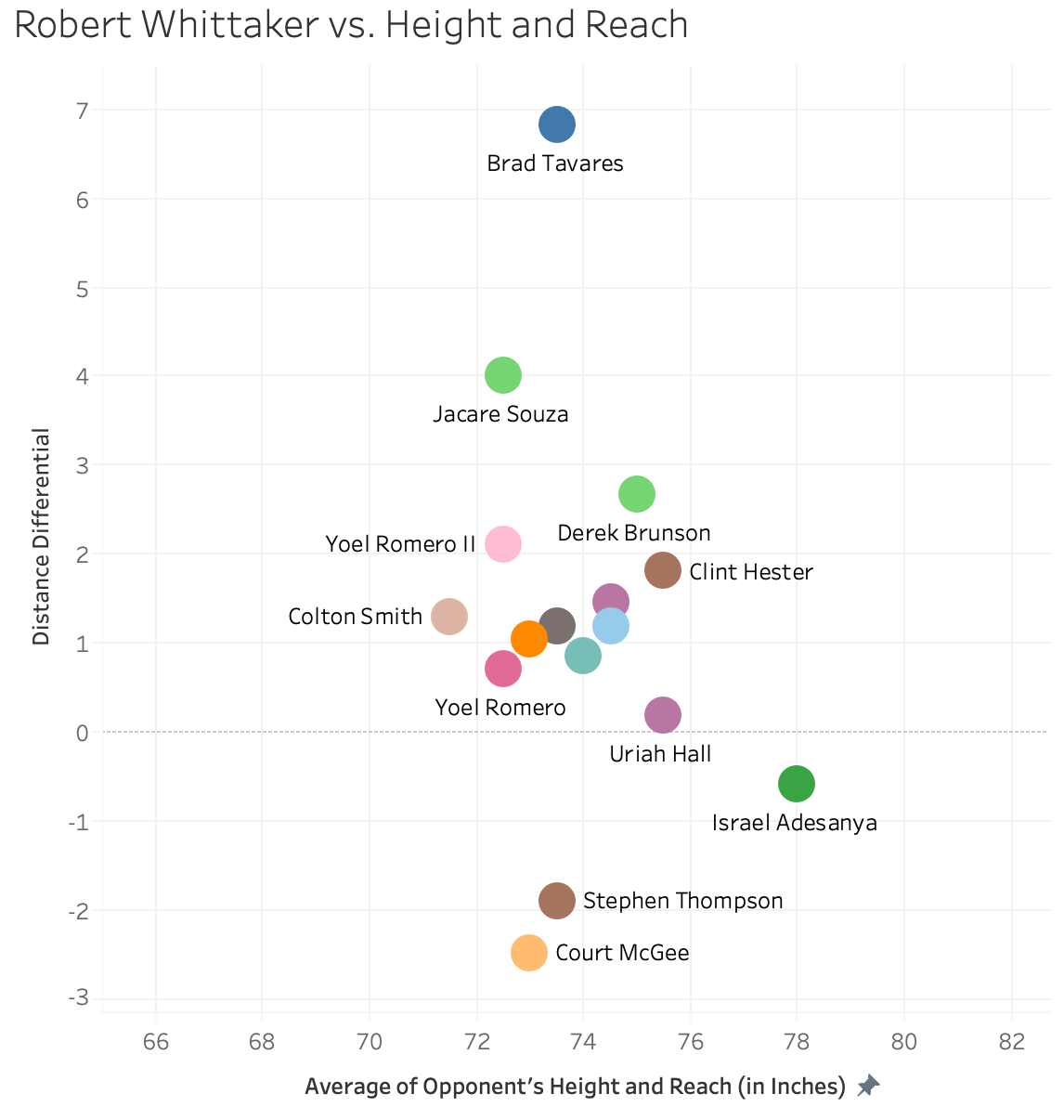What does Kelvin Gastelum's performance against longer fighters say about his match against Robert Whittaker?
The 2021 edition of the MIT Sloan Sports Analytics Conference wrapped up last Friday. During a particular panel named, “Say Goodbye to the 40 yard dash: The future of NFL roster building,” Los Angeles Rams executive Kevin Demoff noted some physical attributes or aptitudes are more predictive of success based on the position of a football player.
“I think what you find is that it is different at each position based on the way you are coaching and the scheme you run… For some positions, the 40 may be more predictive, because you are looking at long speed, at other positions it may be about power, broad jump or vertical jump or the explosion. For receivers it may be arm length or catch radius and that combined with height.”
Let’s ignore the Alanis Morissette irony that Demoff talked about the predictive nature of the 40 on a panel about moving on from the 40. He still makes an important and somewhat obvious point. If your position or style of play does not require dynamic speed, then the 40-yard-dash time is less predictive of success. If anything, this is yet another excuse to watch the video of Tom Brady’s 40 attempt from the 2000 combine.
In MMA, you could say that everyone plays the same position, but this is certainly not true in terms of style. The differences in fighting styles make identifying the importance of statistics exceedingly difficult. For example, striking differential, the number of significant strikes landed per minute minus the number of significant strikes absorbed per minute, seems like a very important measure in MMA, and it usually is a pretty strong gauge of skill and success. However, Michael Chiesa who seems somewhat disinterested in striking has only a +0.18 differential yet regularly defeats top fighters with positional control.
The key stylistic differences can be much more granular than wrestler vs. striker and can be rather hard to spot. At a glance, this weekend’s main eventers, Robert Whittaker and Kelvin Gsstelum have rather similar stats. Over 80% of their landed significant strikes have come at distance, and they have rather similar striking differentials.
In MMA we do not have access to combine data or sophisticated tracking data. However, in this case, simple height and reach might be informative, at least for Gastelum. The following chart shows Gastelum’s distance differential by fight plotted against the average of his opponent’s height and reach. For example, Michael Bisping is 73 inches tall and has a 75 inch reach for an average of 74. Against Bisping, Gastelum has a +0.80 distance differential (distance significant strikes landed per minute minus distance significant strikes absorbed per minute).
*the chart excludes Gastelum’s fight against Brian Melancon since his height and reach is not recorded on UFCStats.com.
As you can see from the chart and trend line (solid line), Gastelum’s distance differential has generally been better against fighters with lower average height and reach. All six of his negative distance differential performances have come against fighters with a height and reach average greater than 72 inches.
The vertical dashed line is set at 72.5 inches, which is the average of Whittaker’s height (72) and reach (73). The good news for Gastelum is that he seems, for the most part, to put up solid distance striking numbers unless facing an opponent with a height and reach average above 74 inches. The bad news is that even if Whittaker does not have the length to trouble Gastelum, he has always done his best work at range.
The former middleweight champion has very strong offensive striking numbers at distance. He lands 3.75 significant distance strikes per minute, which is the third highest rate ranked middleweights behind Sean Strickland (4.23) and Paulo Costa (5.82). His 0.84 significant leg strikes per minute also ranks third in the same group behind a pair of fighters who gave Gastelum a lot of trouble: Jack Hermansson (0.95) and Israel Adesanya (1.22).
Unlike Gastelum, Whittaker’s version of the chart does not seem to imply any trend. His distance differential does not seem to depend on an opponent’s length
While Gastelum has struggled against lankier fighters, Whittaker does not seem to have the height and reach to give him trouble. With that said, Whittaker uses his range very well. He lands a high number of strikes at distance and does solid work with his leg kicks. If this fight plays out at range it likely favors the former middleweight champion.
Gastelum did go to his wrestling early and often in his last fight against Ian Heinisch, and he does average 1.22 takedowns per 15 minutes of fight time. However, Whittaker has surrendered only three takedowns in his UFC career when not facing an Olympic silver medalist who has multiple victories over Cael Sanderson.






